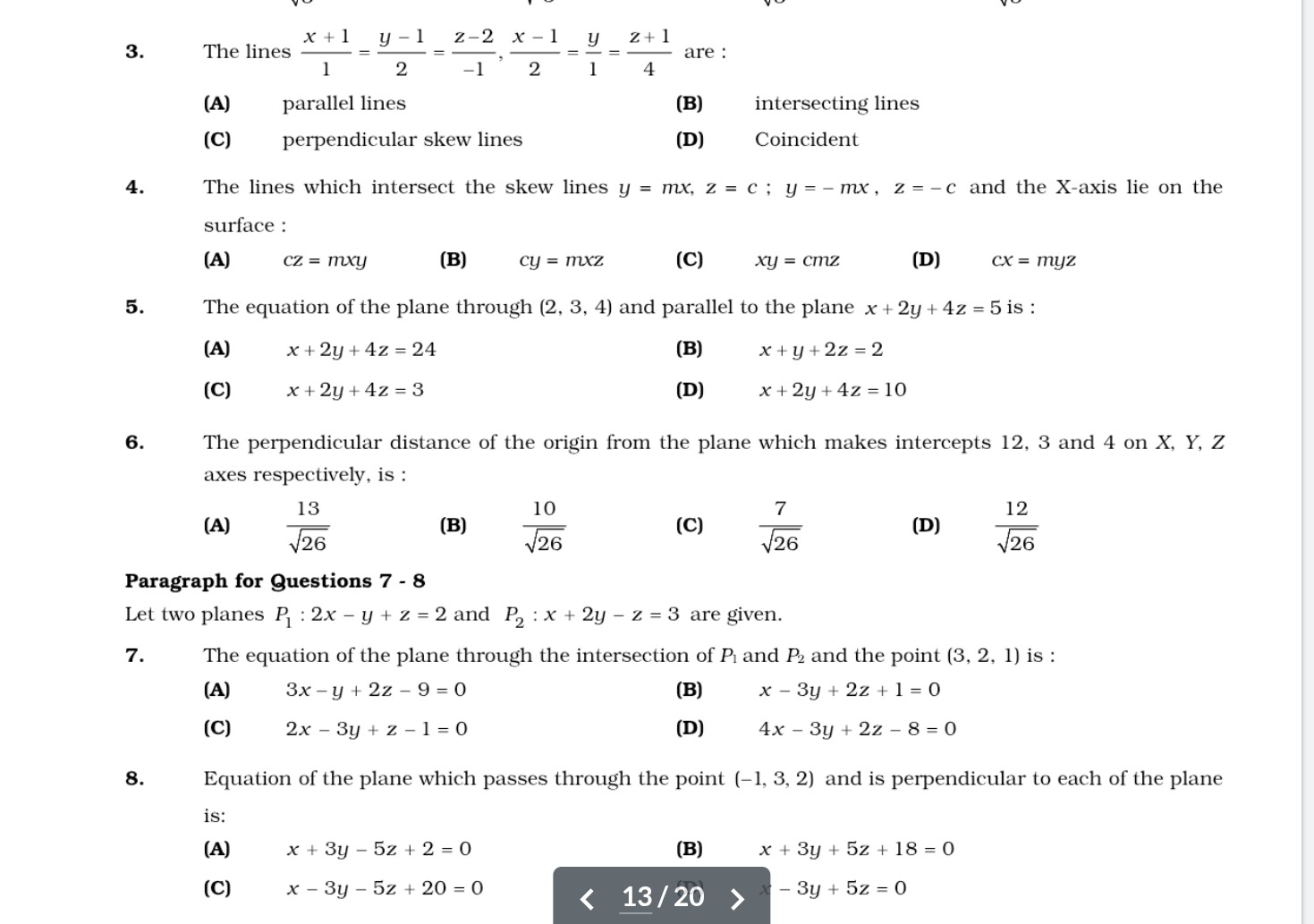Question
Question: The lines $\frac{x+1}{1} = \frac{y-1}{2} = \frac{z-2}{-1}$, $\frac{x-1}{2} = \frac{y}{1} = \frac{z+1...
The lines 1x+1=2y−1=−1z−2, 2x−1=1y=4z+1 are:

parallel lines
intersecting lines
perpendicular skew lines
Coincident
perpendicular skew lines
Solution
Let the first line be L1 with direction vector d1=⟨1,2,−1⟩ and a point P1=(−1,1,2). Let the second line be L2 with direction vector d2=⟨2,1,4⟩ and a point P2=(1,0,−1).
-
Check for Parallelism: The direction vectors d1 and d2 are not proportional (21=12=4−1), so the lines are not parallel.
-
Check for Perpendicularity: The dot product of the direction vectors is d1⋅d2=(1)(2)+(2)(1)+(−1)(4)=2+2−4=0. Since the dot product is zero, the lines are perpendicular.
-
Check for Intersection: To check if the lines intersect, we determine if they are coplanar. This is done by checking if the scalar triple product of the vector connecting a point on each line (P1P2) and the direction vectors is zero. P1P2=P2−P1=⟨1−(−1),0−1,−1−2⟩=⟨2,−1,−3⟩. The scalar triple product is: 212−121−3−14=2(8−(−1))−(−1)(4−(−2))+(−3)(1−4)=2(9)+1(6)−3(−3)=18+6+9=33 Since the scalar triple product is 33=0, the lines are not coplanar, and therefore do not intersect.
Since the lines are perpendicular and do not intersect, they are perpendicular skew lines.
